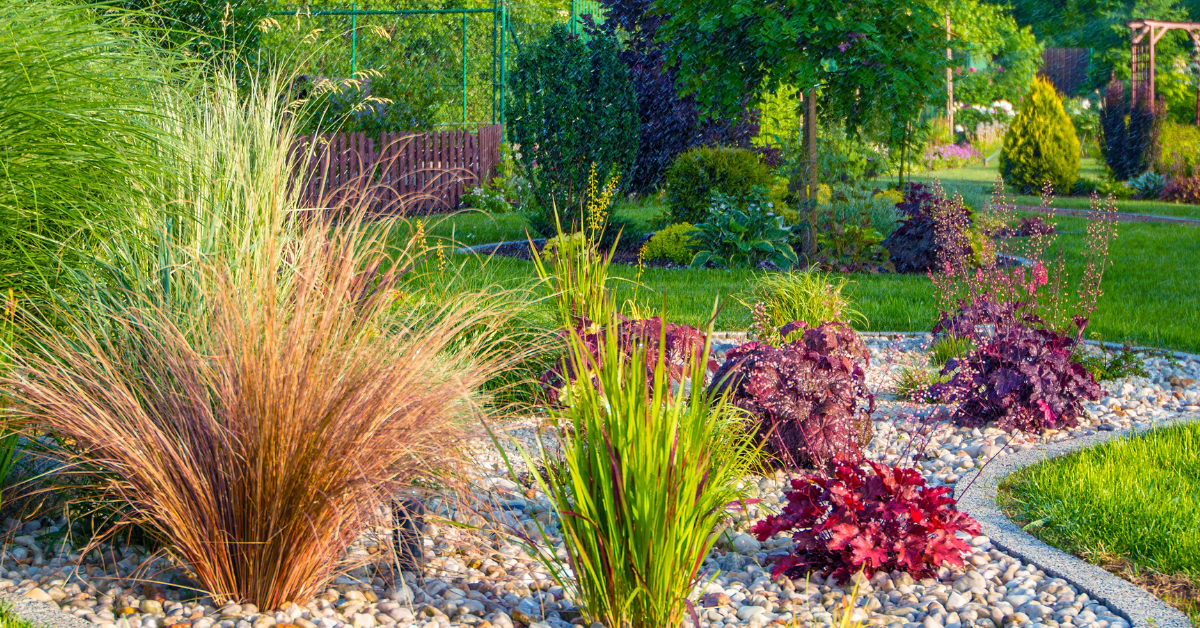When you’re designing an outdoor space for both functionality and aesthetic, it’s paramount that you select the right materials. Landscaping rocks are a popular choice thanks to their durability, versatility, and overall aesthetic appeal. In this post, we’ll explore the different types of landscaping rocks, their characteristics, common uses, and the benefits and considerations associated with each type.
River Rocks
River rocks are smooth, rounded stones found near riverbeds and water sources. Their natural beauty and soothing colors make them a popular material for landscaping projects. They’re available in many sizes and are commonly used to add a touch of grandeur to pathways, borders, and dry creek beds. They can even be used to create stunning decorative mosaic art in your landscaping design.
Pea Gravel
Pea gravel is a versatile option made of small rounded stones that are similar in size to peas. Available in both earthy and vibrant tones, it’s easy to install, inexpensive, and only requires minimal upkeep. This is an ideal choice for ground cover for flower beds, pathways, driveways, and other high-traffic areas. Just be aware of the fact that pea gravel can move, scatter, and shift which may necessitate occasional maintenance.
Flagstone
Flagstone is a rustic and charming flat-layered rock with an irregular shape. This invites creative designs for patios and stepping stones. In addition to its visual appeal, it provides durability and a non-slip surface making it an excellent choice for many outdoor spaces. However, one potential downside of flagstone is the space between stones where weeds can grow, water can gather, and patio furniture may get caught; this also can create a tripping hazard.
Cobblestone
Cobblestones, with their rounded shape and slightly rough texture, exude traditional style and can enhance any landscape. They’re commonly used for driveways, pathways, and edging around front and back lawns. They also provide stability in high-traffic areas thanks to their interlocking nature. However, be aware of their uneven surface, which may be a concern especially if accessibility or mobility is an issue.
Lava Rock
As its name suggests, this porous and lightweight rock is formed from solidified lava. Available in gorgeous black, red, and brown colors with a unique texture, lava rock provides a radiant contrast to traditional landscaping designs. It’s commonly used in rock gardens, as mulch that won’t decompose, and as ground cover around trees and shrubs. As an added benefit, lava rock even helps to repel snakes. However, be careful where you place it as it can damage lawn mower blades and other gardening equipment; it’s best to keep it away from areas you plan on mowing.
Marble
Marble rocks epitomize classic sophistication. Available in a variety of colors and intricate veining patterns, it’s often used for beautiful ornamental projects, such as statues and fountains. This adds luxury and elegance to a landscaping project. However, one should note that marble stains easily, requiring regular upkeep.
Conclusion
Whether you pick river rocks, pea gravel, flagstone, cobblestone, lava rock, or marble, each type of rock offers its own unique charm. By understanding the characteristics, common uses, and benefits of each, you’ll know which is the best type of landscaping rock to meet your needs. With this knowledge, you can create visually stunning, fully functional outdoor spaces, and confidently bring your landscape design to life.
If you need help selecting the perfect landscaping rock for your next project, RELS Landscaping Supply is happy to assist you. Don’t hesitate to get in touch with us today!

